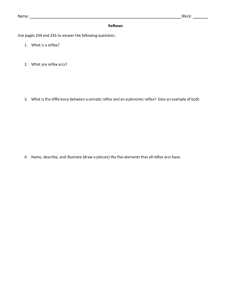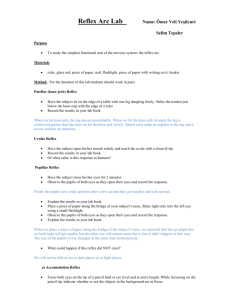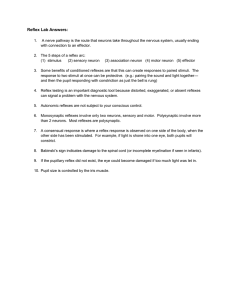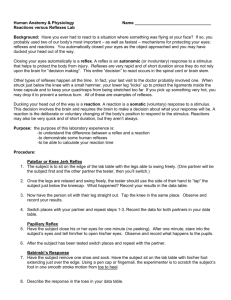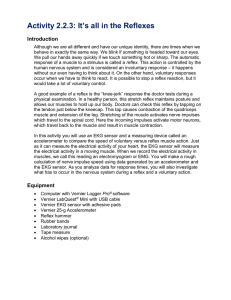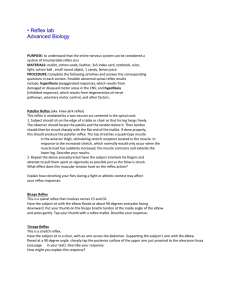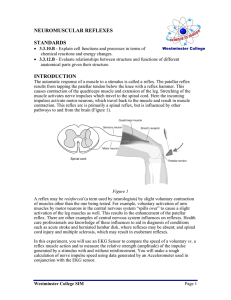Reflex Arc LAb
advertisement
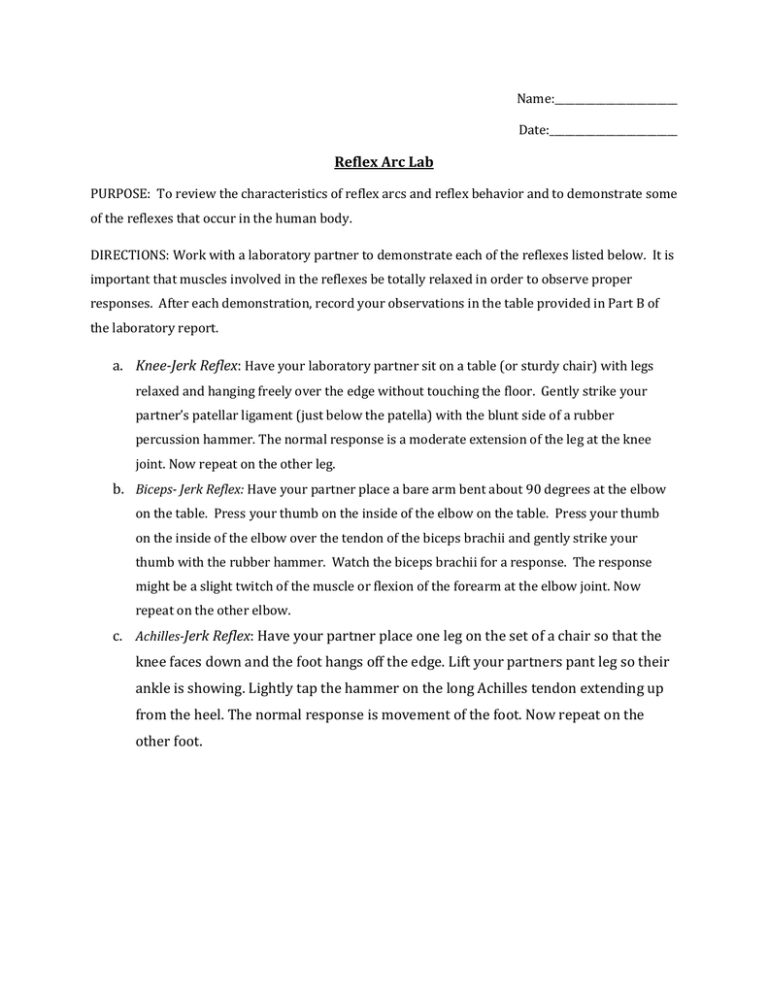
Name:________________________ Date:_________________________ Reflex Arc Lab PURPOSE: To review the characteristics of reflex arcs and reflex behavior and to demonstrate some of the reflexes that occur in the human body. DIRECTIONS: Work with a laboratory partner to demonstrate each of the reflexes listed below. It is important that muscles involved in the reflexes be totally relaxed in order to observe proper responses. After each demonstration, record your observations in the table provided in Part B of the laboratory report. a. Knee-Jerk Reflex: Have your laboratory partner sit on a table (or sturdy chair) with legs relaxed and hanging freely over the edge without touching the floor. Gently strike your partner’s patellar ligament (just below the patella) with the blunt side of a rubber percussion hammer. The normal response is a moderate extension of the leg at the knee joint. Now repeat on the other leg. b. Biceps- Jerk Reflex: Have your partner place a bare arm bent about 90 degrees at the elbow on the table. Press your thumb on the inside of the elbow on the table. Press your thumb on the inside of the elbow over the tendon of the biceps brachii and gently strike your thumb with the rubber hammer. Watch the biceps brachii for a response. The response might be a slight twitch of the muscle or flexion of the forearm at the elbow joint. Now repeat on the other elbow. c. Achilles-Jerk Reflex: Have your partner place one leg on the set of a chair so that the knee faces down and the foot hangs off the edge. Lift your partners pant leg so their ankle is showing. Lightly tap the hammer on the long Achilles tendon extending up from the heel. The normal response is movement of the foot. Now repeat on the other foot. Reflex Tested Left Side Observed Right Side Observed Effector Muscle Response Response Involved Knee-Jerk Biceps-Jerk Achilles-Jerk Questions: 1. What is a reflex arc? 2. List the major events that occur in the knee-jerk reflex, from the striking of the patellar ligament to the resulting response. 3. Were the responses of both the right and left side the same? Should both sides react the same way? 4. What is the difference between polysynaptic and monosynaptic reflex arcs?
